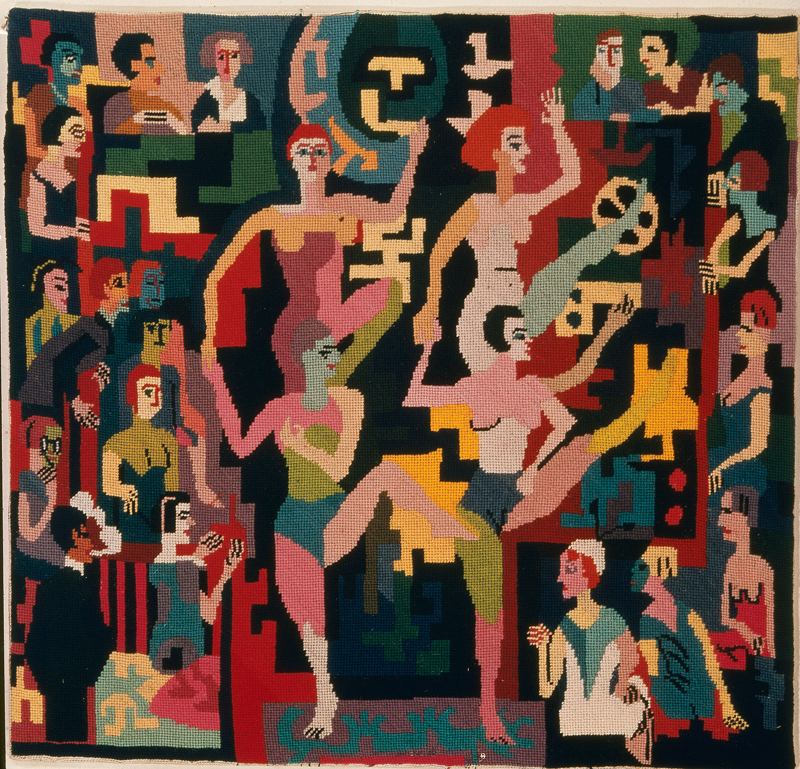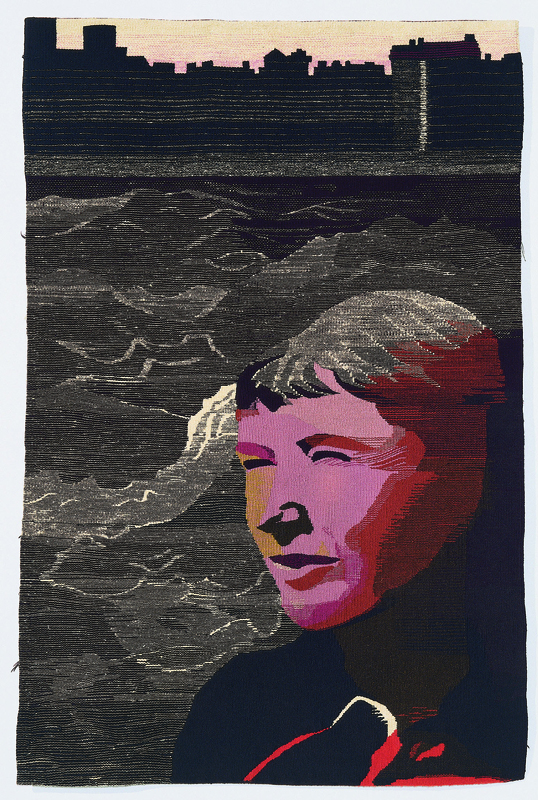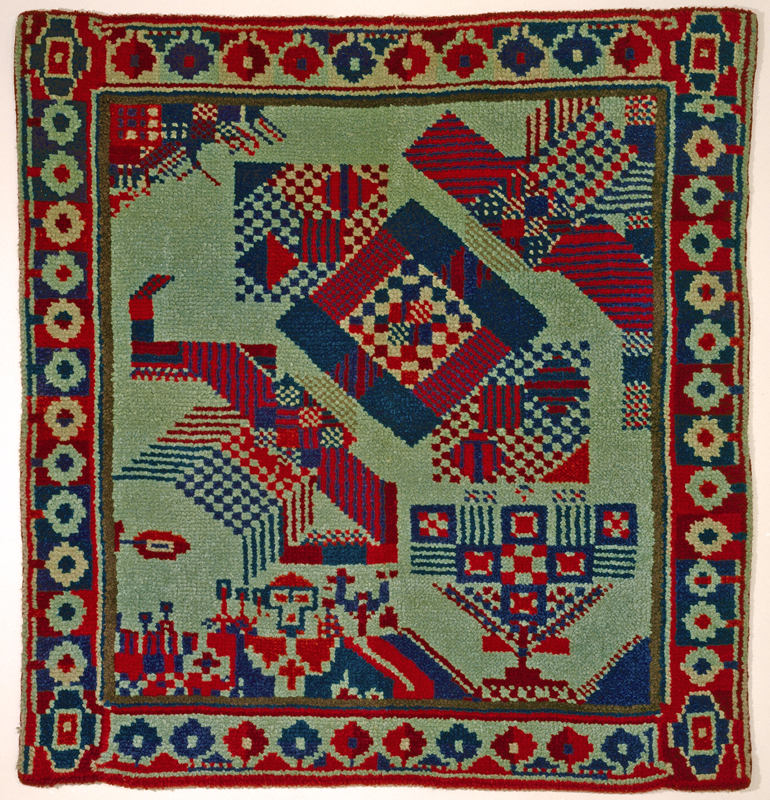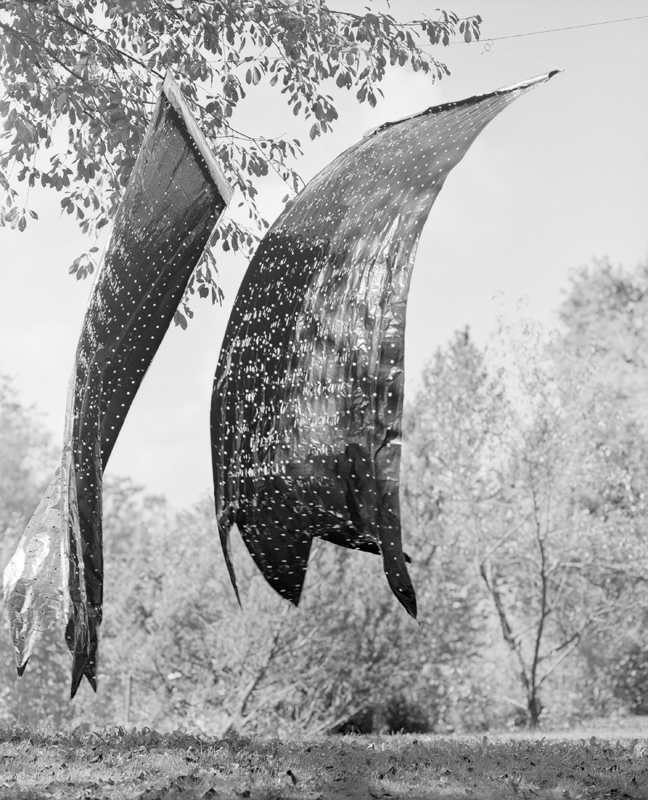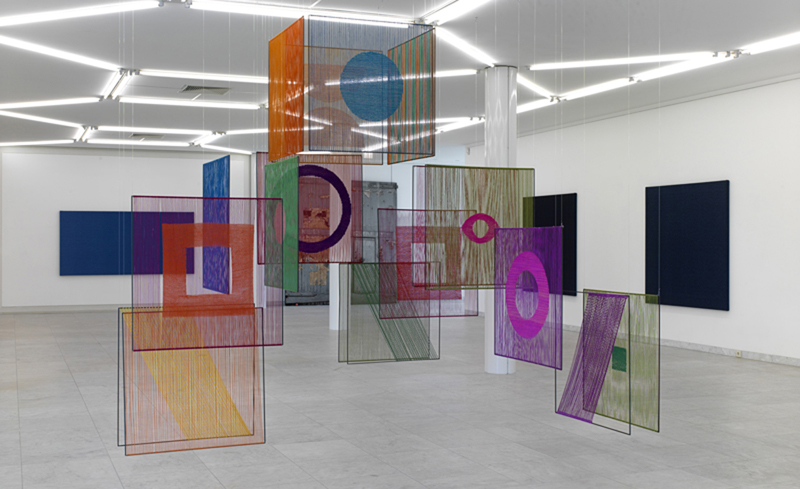
The Textile Room, an exhibition from 23 October 2015 to 21 February 2016 at the Museum Bellerive,Höschgasse 3, CH_8008 Zürich.The importance of this exhibition cannot be overstated because here the real story of the textile art is documented. This is in stark contrast to exhibitions of visual art where textile works of painters are shown, executed by Atelier “Flanders Tapestries”, or other works by other artists borrowing from the field of textile without having any idea about textile techniques and materials.Hier follows the press release:
Textile art is currently undergoing a renaissance. The exhibition The Textile Room at the Museum Bellerive ranges from artisan home textiles from the 1910s to contemporary design. It shows the importance of Swiss textile art in the international art context and documents the impressive careers of its leading practitioners in a densely packed showing masterly objects and numerous contemporary documents. About a century ago, Sophie Taeuber-Arp (1889–1943) steered her students’ previously floral tulle embroideries toward geometric designs and thus laid the foundation for an innovative approach to textile techniques. The Taeuber-Arp student Elsi Giauque (1900–1989) continued her teacher’s visionary legacy and initiated numerous commissions in applied art disciplines between 1944 and 1966 as part of her teaching position for textile experiments. At her home in Ligerz on Lake Biel, along with her former student Käthi Wenger (*1922), she ran a studio for experimental fabrics. The resulting artworks opened up a new dimension in the genre of weaving and caused a sensation at the Biennale Internationale de la Tapisserie in Lausanne—which from 1962 on was the showcase for the international “fiber art” movement. At the Museum Bellerive, Giauque and Wenger’s textile columns of vertical warp threads make for striking architectural elements, while the installation Élément spatial—an iconic work of textile art—is composed of colored tiles that combine into constantly changing compositions and colors thanks to their permeability. The success of her students underline Elsi Giauque’s contribution to the international renown that Swiss textile art continues to enjoy today. Moik Schiele’s (1938–1993) woven Silberne Welle (Silver Wave) meanders elegantly along the vertical axis, while her intensely colored tapestries produce an almost explosive effect. Liselotte Siegfried (*1935), by contrast, made filigree lace works using chicken wires. Other students, such as Marlise Staehelin (1927–1991), passed on her knowledge and laid the foundation for careers such as that of the artist Françoise
Grossen (*1943), from French Switzerland, who combined heavy threads into ropes and knots to create seductive works of a new kind of sensuality. Starting with artisan home textiles, the exhibition features key works of fiber art and follows its offshoots in textile design, including printed and woven fabrics. Among these are designs for fabrics by the Bauhaus master Gunta Stölzl (1897–1983), an émigrée to Switzerland, whose appeal stems from their innovative structures and materials such as cellophane and rayon. The extravagant home textiles by the designer couple Trix and Robert Haussmann, on the other hand, create illusionary effects with materials. Finally, Claudia Caviezel’s wall hangings lend the room a multilayered magical atmosphere. The exhibition The Textile Room follows common structural qualities and mixes unique pieces with design products. The collections of the Museum für Gestaltung and the archive of the Zurich University of the Arts, augmented by loans from the Fondation Toms Pauli, the collections of the cities of Bern, Biel, and Zurich, and the Kunstmuseum Winterthur, as well as loans from the artists and their families, are woven into a dense, fascinating web.
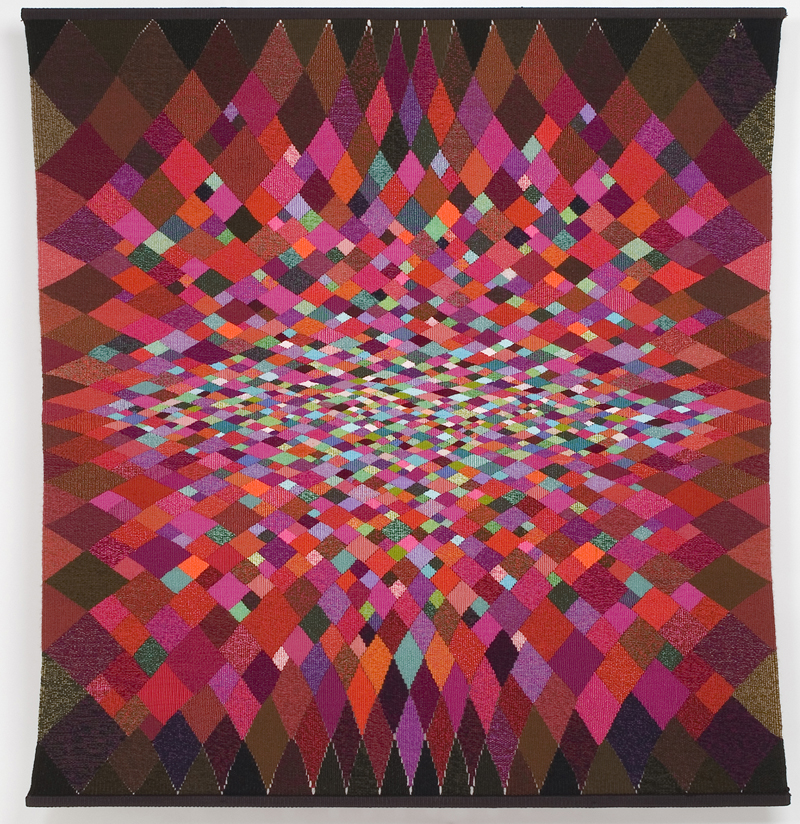
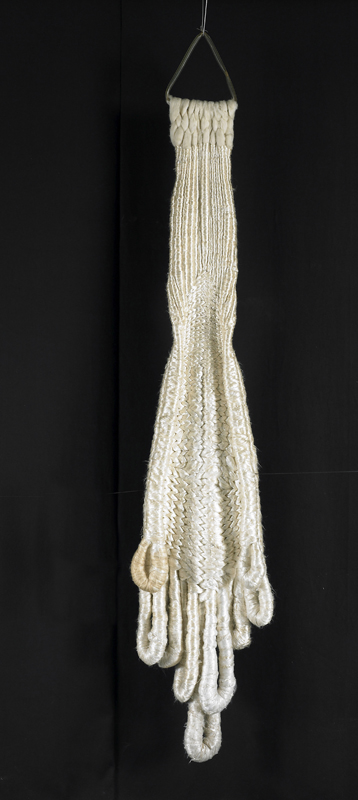
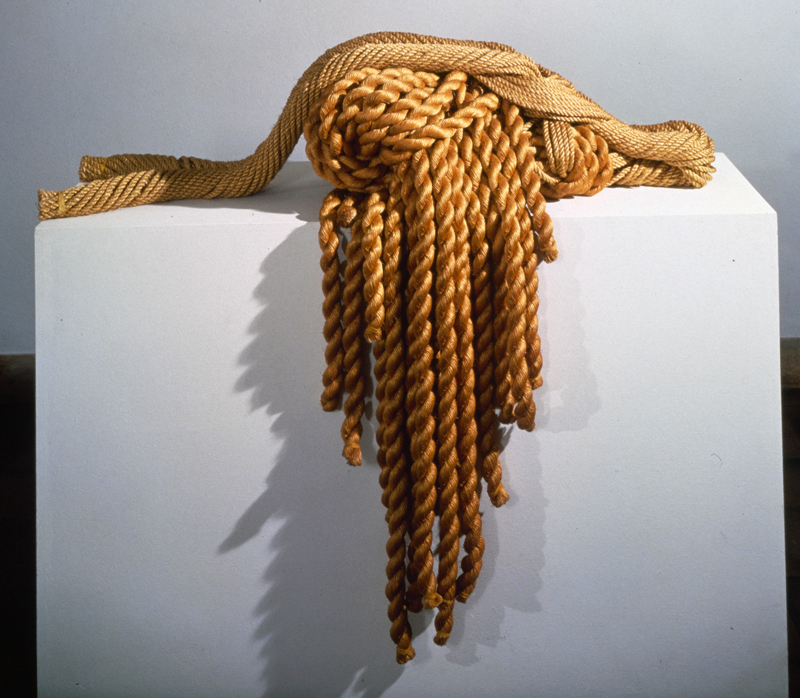
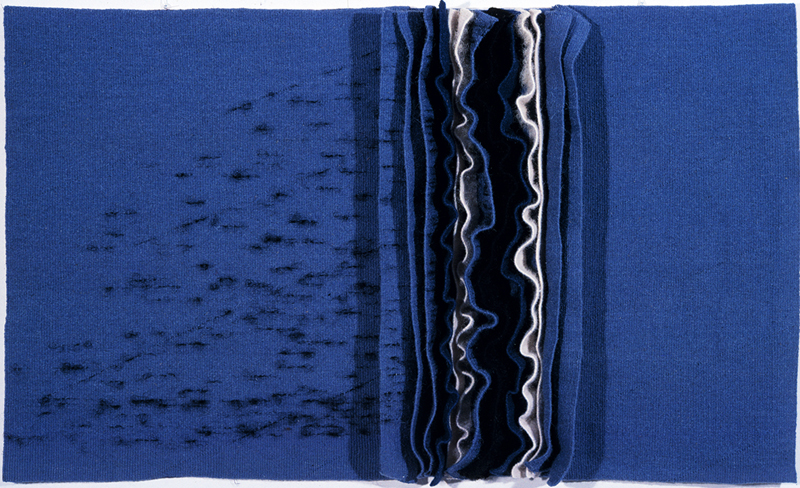
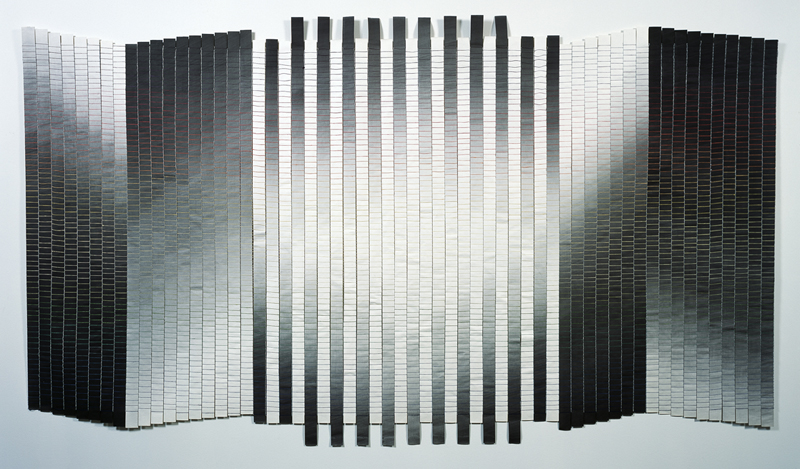
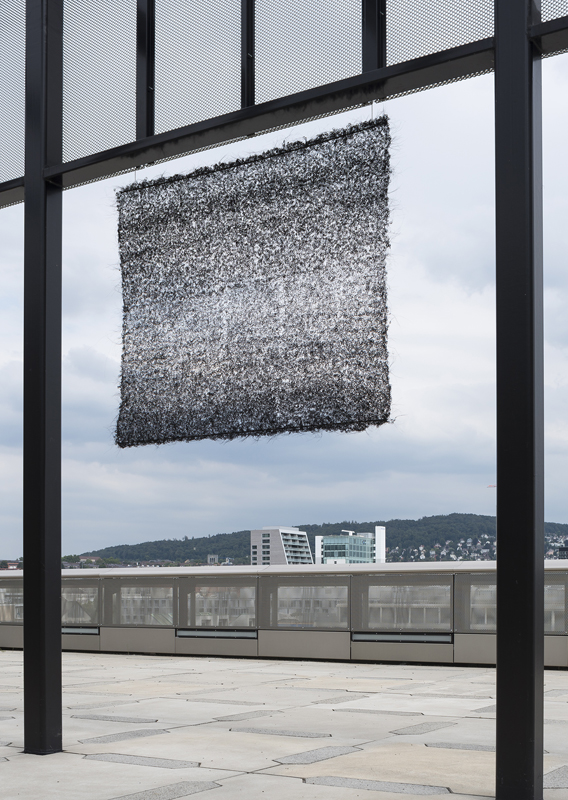
Maille de crin, 1983-1984 Museum für Gestaltung Zürich, Applied Art Collection Photo: FX.Jaggy & U.Romito, Museum für Gestaltung, © ZHdK